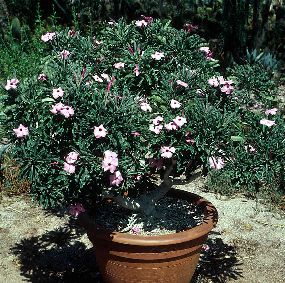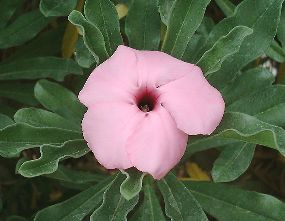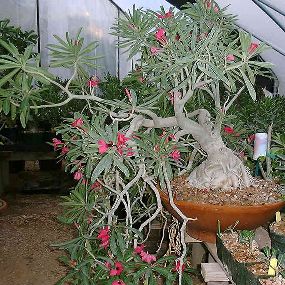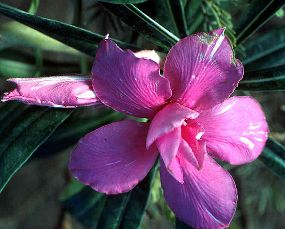![[Picture]](a.gif)
Adenium swazicum Stapf
Adenium swazicum occurs in Swaziland and adjacent parts of South Africa. Its range extends into highlands that have fairly cold winters; this species will tolerate a light frost with little or no damage. They also experience winter rains, so they are tolerant of being simultaneously wet and cold. The stems tend to be weak and decumbent, and the caudex, actually swollen roots, tends to be underground. Plants flower in late summer and fall (some clones flower most of the year). The best distinguishing character is the petals of solid color (no fading toward the throat), which is darker in color and lacks nectar guides. In addition, the anther appendages are very short and hidden within the tube, a trait it shares only with A. boehmianum. White flowers are known in cultivation. Literature says that wild plants may have red flowers, but they seem to be unknown in cultivation. This species is probably the second most popular in cultivation after A. obesum. It is also a parent of many hybrids.
(click on thumbnail for full size picture)






